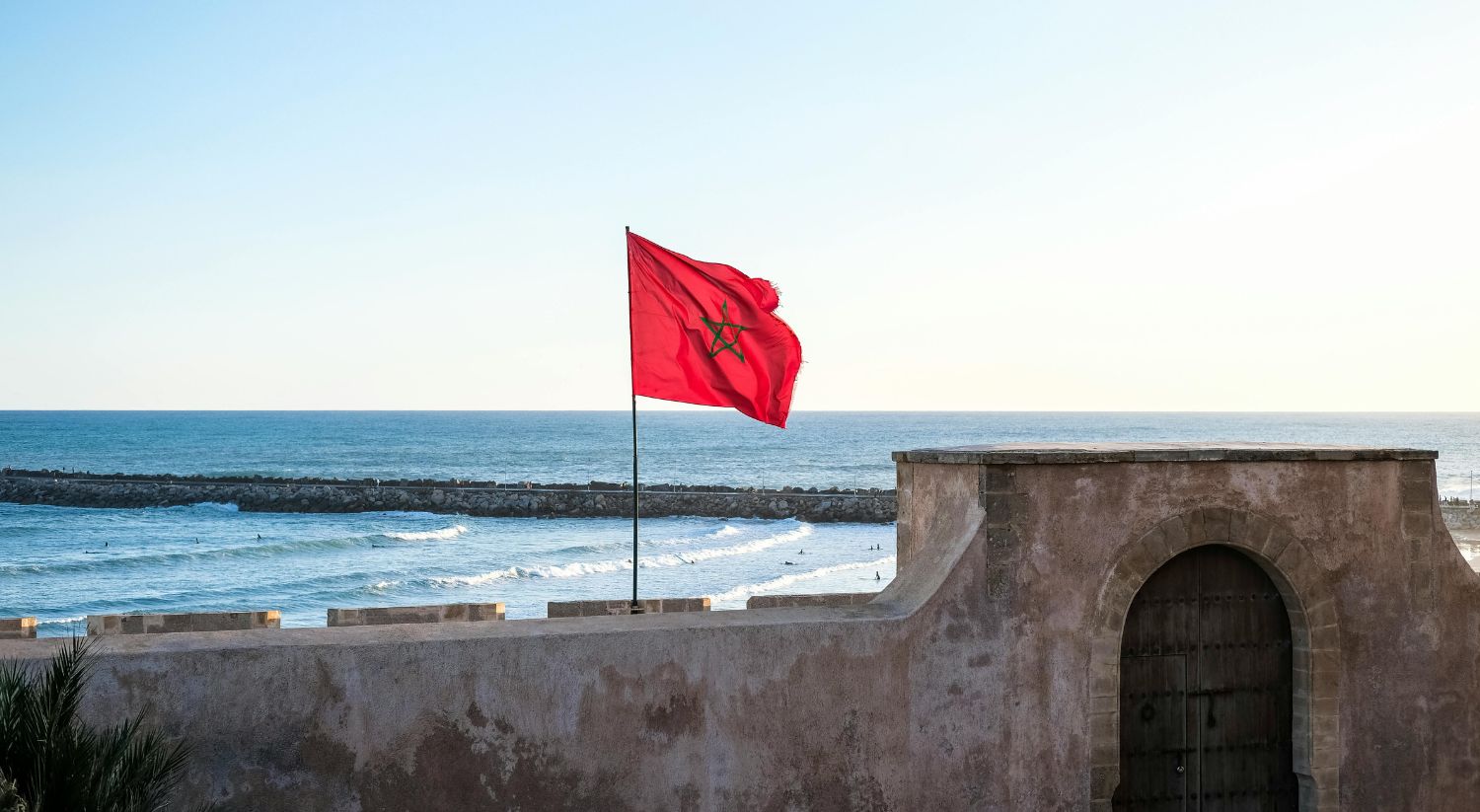
Morocco is, without a doubt, a journey into magic and beauty. A land where ancient culture, religion, and tradition come together. Yet, at the same time, this enchanting country embraces modernity without ever losing sight of its rich past. Morocco is also an ideal destination for language learners, offering a unique opportunity to discover new languages through the lens of culture.
The breathtaking landscapes of Morocco open the door to a world that blends past, present, and future. From majestic deserts to vibrant cities, every corner holds a story waiting to be told.
Today, we’ll dive into a side of Morocco that rarely appears in tourist brochures—a deeply human, historic country, rich in culture, music, and time-honored traditions. And of course, we couldn’t leave out Moroccan cuisine—because no journey would be complete without tasting its world-renowned dishes.
But more than anything, we’ll uncover Morocco’s greatest treasure: its incredible people. Through their eyes, we’ll explore the essence of modern Morocco—its values, dreams, and daily life.
Get ready to discover a side of this beautiful country you may have never seen before!
Geography and landscape: Two forces that have sculpted Morocco
When you think of Morocco, vivid images likely come to mind—bustling souks, endless deserts, and cities rich in architectural beauty. But to truly grasp the magnificence of this North African country, you need to look deeper. Beyond the markets and monuments lies a land shaped by two powerful elements: its geography and landscape.
These two forces have not only defined Morocco’s climate, biodiversity, and natural resources, but have also profoundly influenced its culture, history, and way of life.
A land of geographic diversity
One of the first things you should know about Morocco is that it’s one of the most geographically diverse countries in Africa. Its terrain includes mountain ranges, Atlantic and Mediterranean coastlines, vast deserts, and fertile valleys. This rich geographical variety has played a vital role in shaping the identity of each region.
To the north, the rugged Rif Mountains serve as a natural barrier between the Mediterranean Sea and the interior. In the center, the Middle Atlas, High Atlas, and Anti-Atlas ranges form a backbone that divides the lush northern plains from the expansive southern desert.
But these mountains are more than physical formations—they’ve served as cultural borders, refuges for Berber communities, and strongholds of ancient traditions.
The desert: A school of resilience and beauty
South of the High Atlas lies one of Morocco’s most iconic landscapes: the Sahara Desert. But don’t just picture golden dunes. The Moroccan desert is far more diverse, with rocky plateaus (hamadas), palm-filled oases, lush date groves, and sweeping dune formations. Together, they create a natural mosaic of stunning variety.
This environment has shaped the character of its people—forging nomadic cultures that are both resilient and welcoming. The desert teaches people to live with little, navigate by the stars, and build with what the earth provides.
Visiting Morocco without venturing—at least briefly—into the desert is missing one of the country’s most enlightening experiences. The Sahara is not just a symbol—it’s a living presence that transforms the way you see the world.
Coastlines that open Morocco to the world
But Morocco is not only about inland landscapes. With more than 3,500 kilometers of coastline, stretching along both the Atlantic Ocean and the Mediterranean Sea, the country has always been a natural bridge between Africa and Europe—a crossroads of civilizations.
Coastal cities like Tangier, Essaouira, and Agadir showcase this openness. From these ports, merchants, travelers, musicians, and scholars have set sail. Here, accents, religions, flavors, and worldviews have mixed for centuries.
This exposure to external influences is key to understanding Morocco’s rich cultural diversity. Thanks to its coasts, the country is African, Mediterranean, Atlantic, and Oriental all at once.
Fertile valleys: Morocco’s green heart
Nestled between mountains and desert, Morocco’s valleys hold lush greenery and fertile lands nourished by rivers. The Oum Er-Rbia and the Sebou are the rivers of the valley. These areas have been agricultural hubs for centuries, producing olives, oranges, grains, dates, and spices—thanks to a delicate balance between water and soil.
In these valleys, you’ll find traditional irrigation systems, timeless farming techniques, and a slower, nature-connected lifestyle. Exploring these regions offers a glimpse into a more intimate Morocco, where every crop tells an ancient story.
Climates that shape regions and lifestyles
Morocco’s diverse geography gives rise to a surprising range of climates: Mediterranean in the north, oceanic on the Atlantic coast, continental in the mountains, and arid in the southeast. This climatic variety influences not just the scenery, but also architecture, cuisine, clothing, and customs.
For instance, in Chefchaouen, red-tiled roofs and whitewashed walls reflect Mediterranean influences. Meanwhile, in Merzouga, desert architecture blends harmoniously with sand and sun. These contrasts offer travelers a rich variety of experiences within a single country.
A crossroads carved by nature
Morocco is not a uniform land but a mosaic of regions, each with its own rhythm, style, and story. All of it shaped—chiseled over centuries—by geography and landscape. These invisible sculptors have created a country of contrasts: arid and lush, mountainous and flat, open and reserved, modern and traditional.
As a traveler, understanding these contrasts allows you to experience Morocco more authentically. Because you’re not just walking through a tourist destination—you’re exploring a living land that speaks through its forms, colors, and scents.
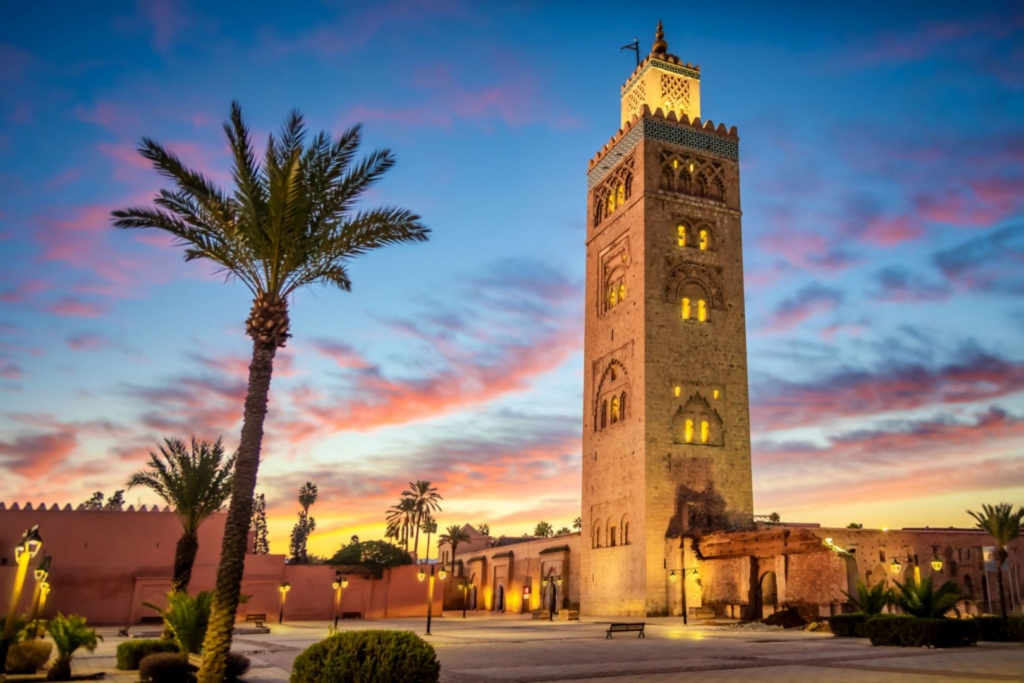
Discovering moroccan culture through its art
When you set out to understand the essence of a country, it’s not enough to admire its landscapes or visit its monuments. To truly grasp the beauty and grandeur of Morocco, you must look beyond the visible. You need to immerse yourself in its vibrant art and deeply aromatic cuisine—two fundamental pillars that reflect the soul of its people, their history, and their traditions.
Morocco is not only a land of geographical contrasts, but also a place of rich and diverse cultural expression. Its millennia-old heritage reveals itself in every brushstroke of calligraphy, every tile in a mosaic, and every dish served at the table. Let’s explore how these elements make up one of North Africa’s richest and most captivating cultures.
Moroccan art: A reflection of history, religion, and diversity
The artistic landscape of Morocco is as diverse as its terrain. Within its many forms of expression, you’ll find a fascinating fusion of Berber, Arab, Andalusian, and African influences. This blend of cultures has given rise to unique, deeply symbolic, and spiritually charged art forms.
Architecture as living art
From the intricate madrasas of Fez to the grand royal palaces of Marrakech, Moroccan architecture speaks for itself. Here, art isn’t confined to museums—the buildings themselves are living canvases, carved and decorated with astonishing precision.
Colorful zellige mosaics, stucco carvings, and horseshoe arches not only embellish spaces but also tell stories and convey spiritual values. The repetition of geometric patterns follows Islamic artistic tradition, which avoids figurative imagery and instead seeks to express the divine through symmetry and perfection.
Arabic calligraphy: Beauty in every letter
In Morocco, writing is more than a tool for communication—it is an art form in its own right. Arabic calligraphy adorns walls, ceramics, textiles, and sacred books. Even without understanding the language, you can appreciate the elegant curves and harmonious compositions that convey a universal sense of beauty.
Handicrafts: Identity in every object
You can wander through the souks and traditional markets of cities like Marrakech, Essaouira, or Meknes. You’ll be surrounded by artisans using techniques passed down through generations. In Morocco, handicrafts are not just souvenirs—they are part of daily life, each object telling a story of heritage and identity.
Some of the most notable forms of traditional Moroccan craftsmanship include:
- Ceramics from Fez and Safi, known for their signature blue and green hues.
- Berber textiles and carpets, blending ancient symbols with natural dyes.
- Leatherwork, especially in Fez, where tanneries still operate using medieval techniques.
- Wood marquetry and metalwork, often seen in ornate lamps and carved doors.
Each of these pieces is a fragment of the Moroccan soul—a tangible connection to the country’s artistic and cultural legacy.
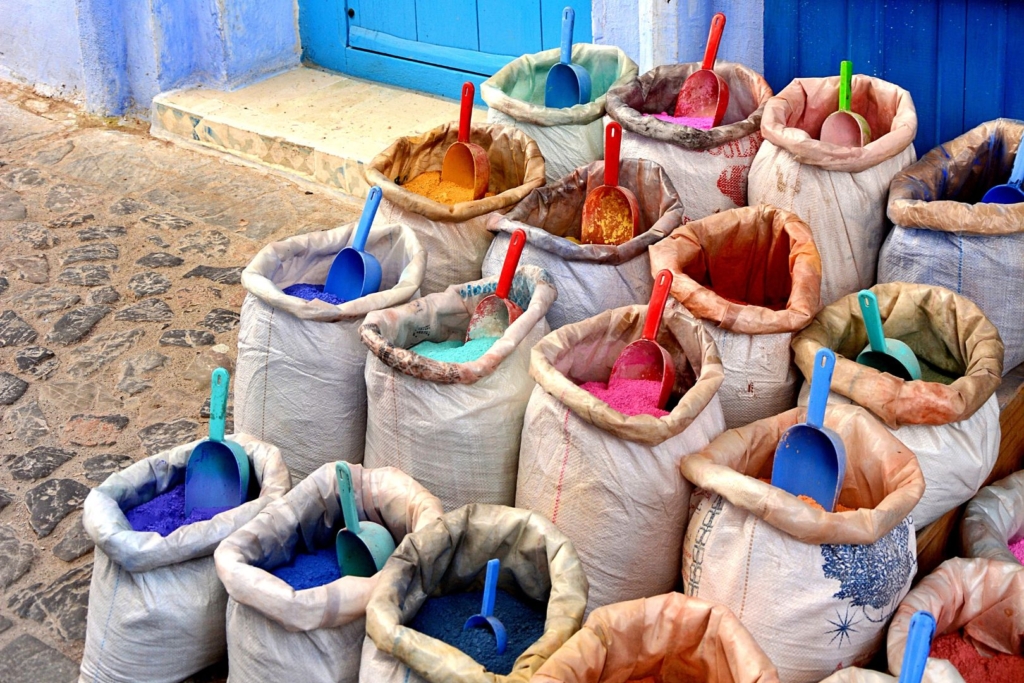
Moroccan cuisine: A sensory journey through flavor and tradition
Just as art beautifies the environment, gastronomy nourishes the soul. If you choose to discover Morocco with all your senses, its cuisine will be your most generous and heartfelt guide.
Moroccan cuisine is widely regarded as one of the richest and most flavorful in the world, known for its diverse ingredients, masterful use of spices, and the perfect balance between tradition and creativity. Tasting Moroccan food means experiencing centuries of history, trade, and cultural exchange.
Ingredients that tell ancient stories
The distinct flavor of the land is built upon ingredients sourced from its diverse regions and ancient trade routes: saffron from the Middle Atlas, olive oil from the north and dates from the desert. As well, couscous, lamb, fish, fresh vegetables, and legumes.
Spices such as cumin, ginger, coriander, turmeric, and cinnamon are essential in Moroccan cooking. They not only enhance flavor but also provide digestive and medicinal benefits, forming an integral part of the country’s culinary identity.
Signature moroccan dishes you must try
- Couscous: More than just a dish, couscous is a Friday family tradition, typically served with meat, vegetables, and chickpeas. It’s often topped with raisins, caramelized onions, or hard-boiled eggs.
- Tagine: Slow-cooked in its iconic clay pot, tagines come in many varieties—lamb with prunes, chicken with preserved lemon, or vegetarian with aromatic spices.
- Harira: A hearty and nourishing soup, especially popular during Ramadan for breaking the fast.
- Moroccan sweets: Like chebakia and briouats, made with honey and delicately scented with orange blossom water.
All of this is best enjoyed with a glass of fresh mint tea, the ultimate symbol of Moroccan hospitality.
A living culture shared in community
Much like its art, Moroccan cuisine is deeply communal. In Morocco, food and culture are not meant to be observed from a distance—they are meant to be shared, lived, and celebrated together.
A trip to Morocco isn’t complete without sharing a home-cooked meal with a local family, attending a Gnawa music ceremony, visiting a traditional artisan workshop, or simply chatting with vendors at a bustling souk. Each of these moments connects you to a culture that doesn’t exist behind glass—it thrives in daily gestures, conversations, and every flavorful bite.
Visit Morocco and stay connected with Talkao at any time
A country so vast, so diverse, and steeped in so much history can seem intimidating, there’s no doubt about it. However, overcoming these inhibitions and exploring Morocco can be a life-changing experience. Not just from a tourist perspective. Seeing its landscapes, learning about its culture, and, of course, enjoying its cuisine is an unforgettable experience.
But how do you explore such a vast country with so many linguistic influences? The solution lies in technology, specifically, Talkao’s translation tools.
Speak in any language
With Talkao Translate and the real-time translator, you can speak in any language. You’ll be able to communicate with anyone regardless of accent or language. And… All you need is your phone!
Read and write regardless of the alphabet
Read anything with AI text translation apps. Talkao text translation features allow you to translate any text into more than 125 languages. You can do this in two ways: by transcribing and using text translation tools. The other way is to use the camera translator and you won’t need to transcribe. You can translate texts in Arabic or any alphabet even if they are inserted in images.
In short, Talkao translation tools are ideal for understanding, speaking, reading and writing whatever you want. So, there are no excuses: Pack your things and travel to Morocco! You will discover a paradise incomparable in the whole world.
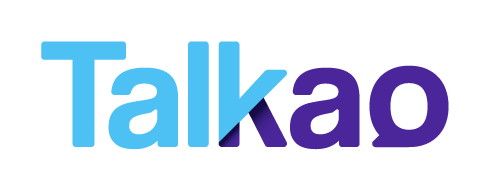

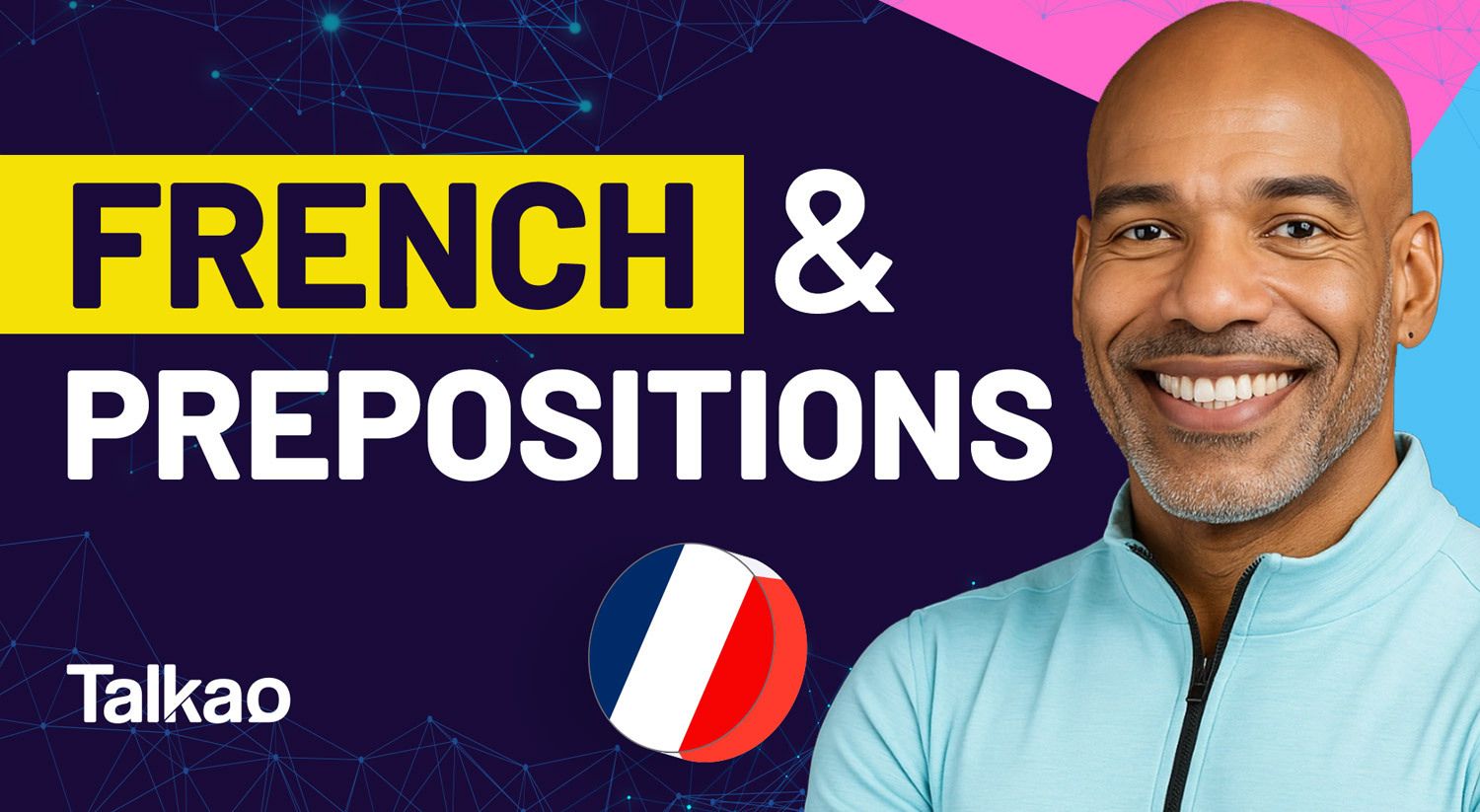
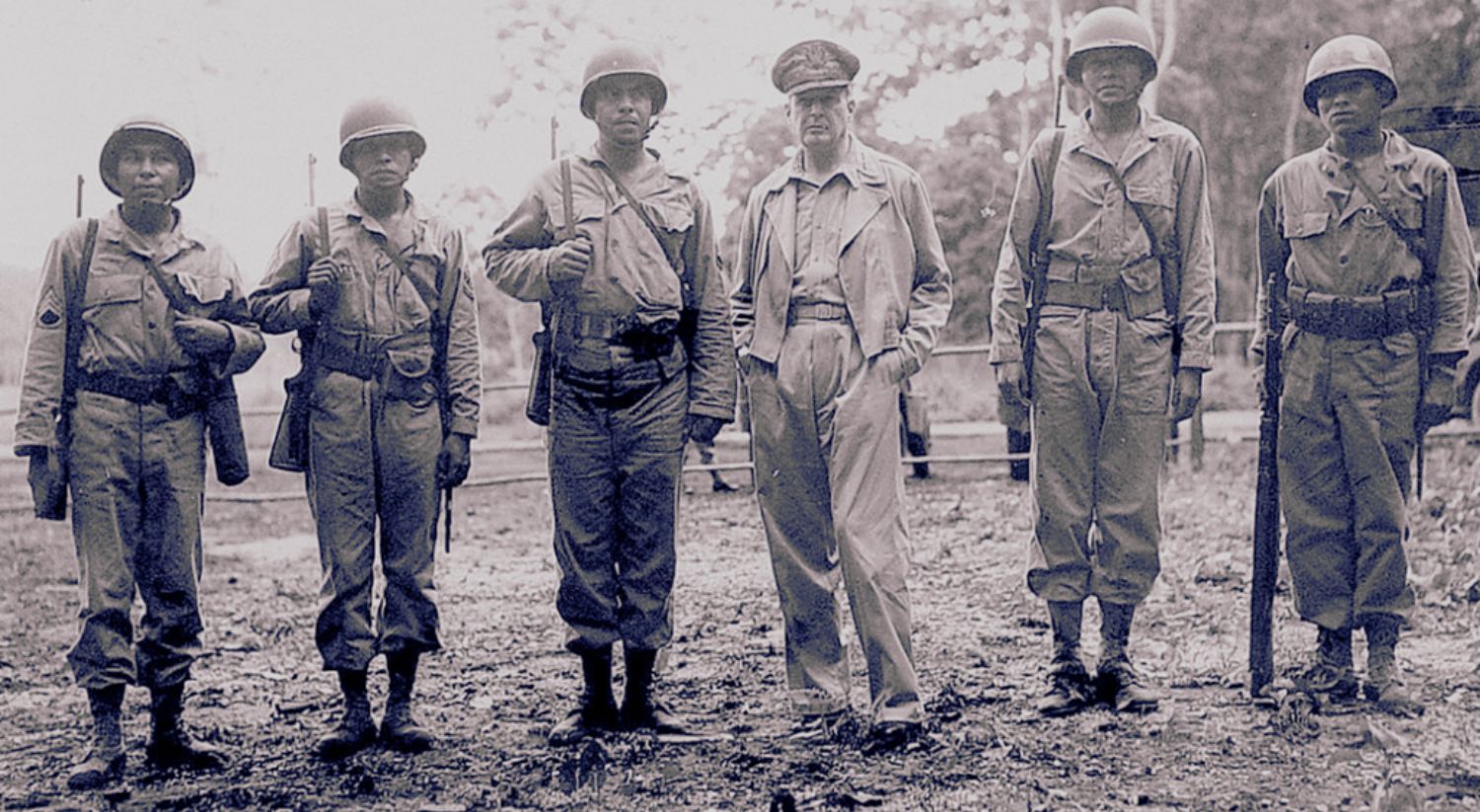
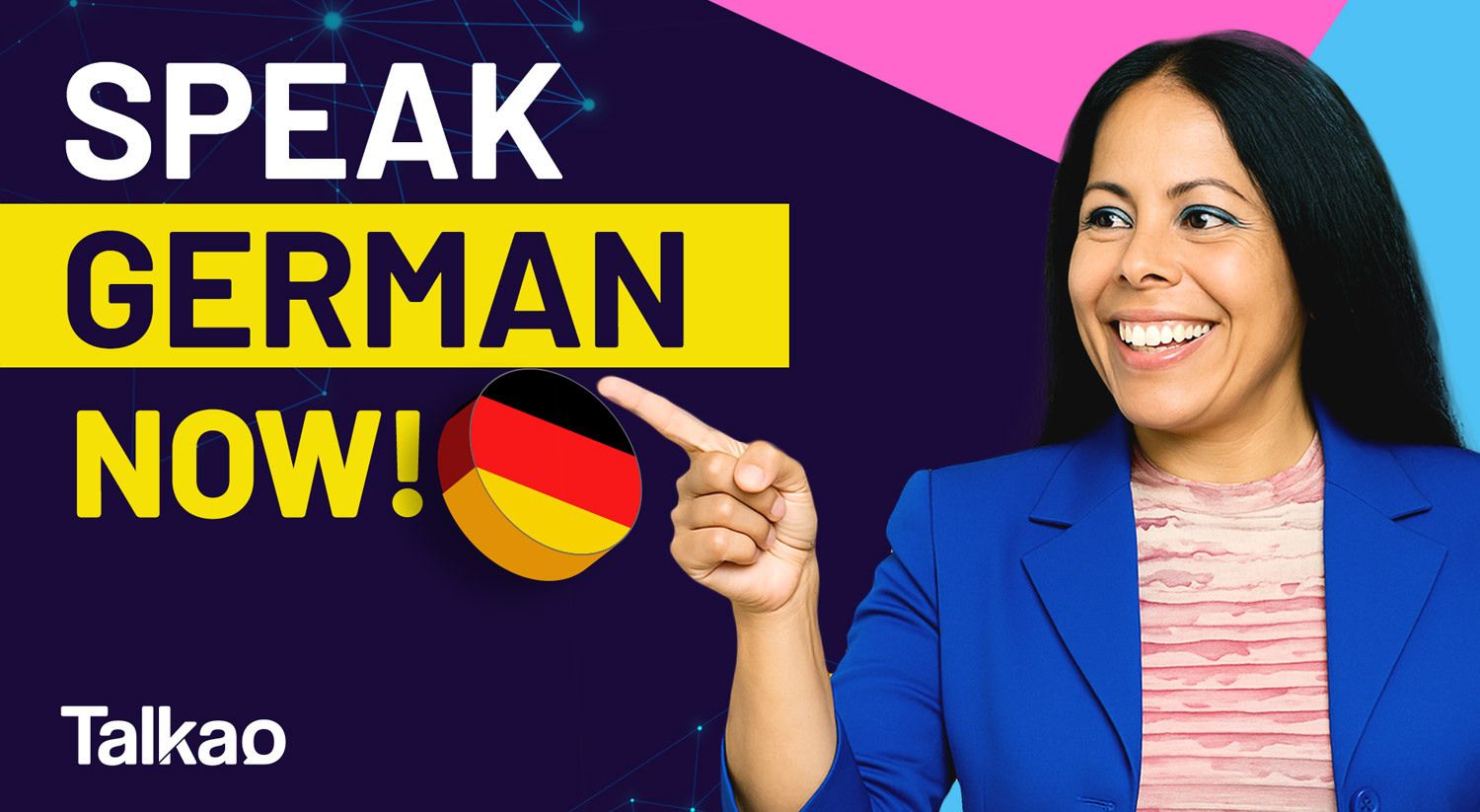
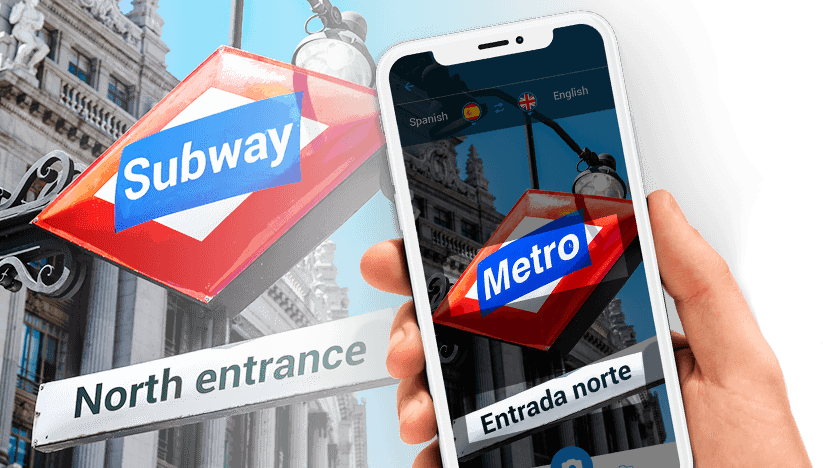




Newsletter